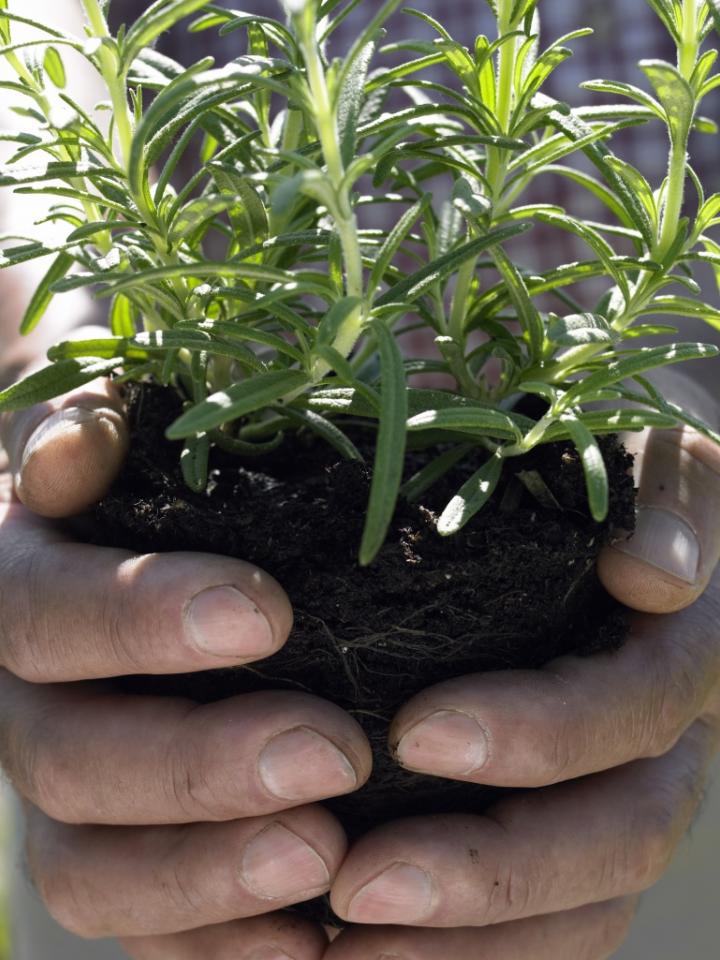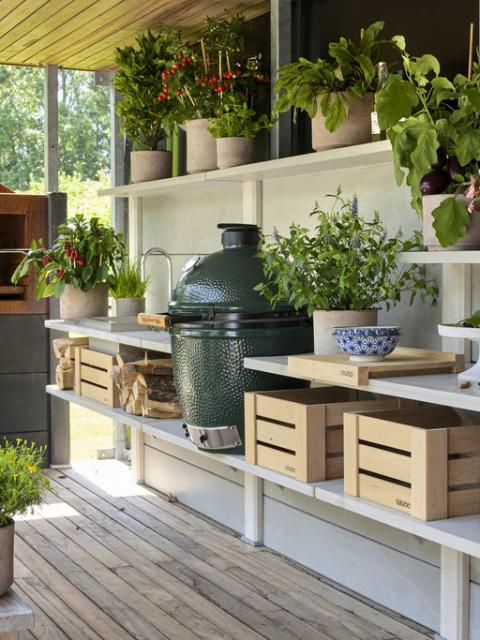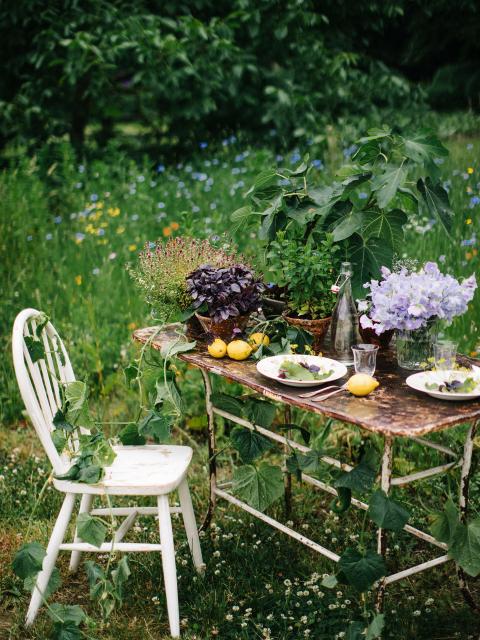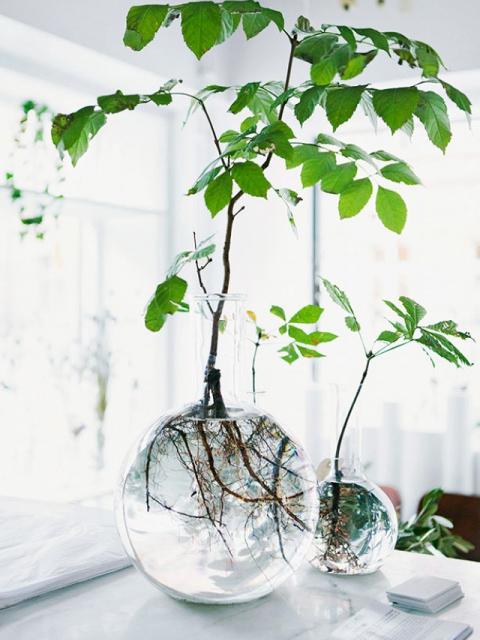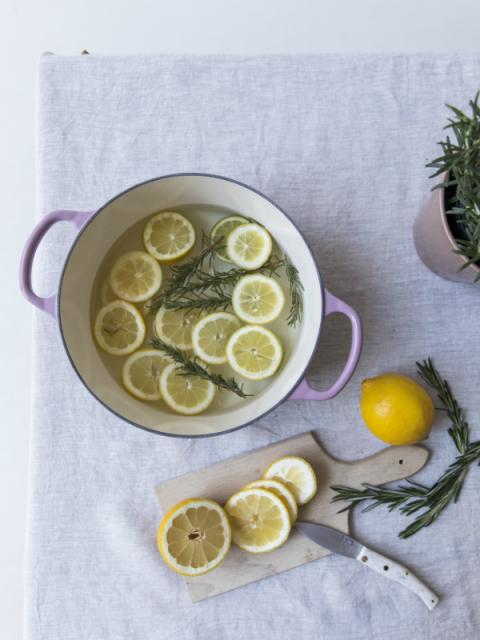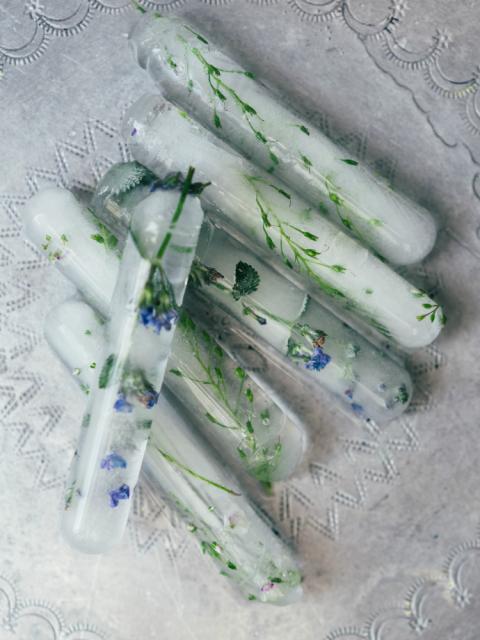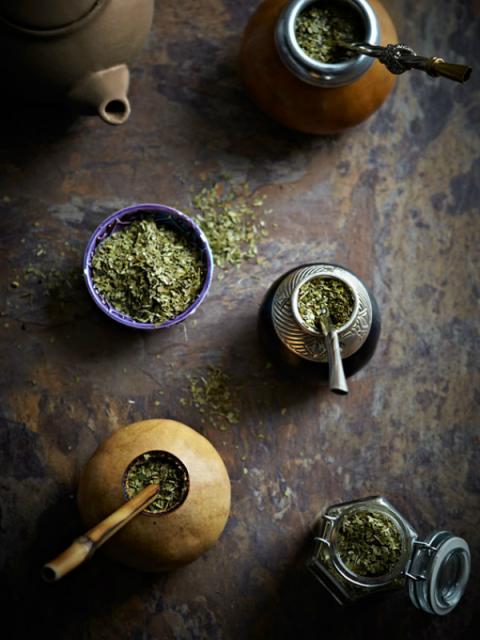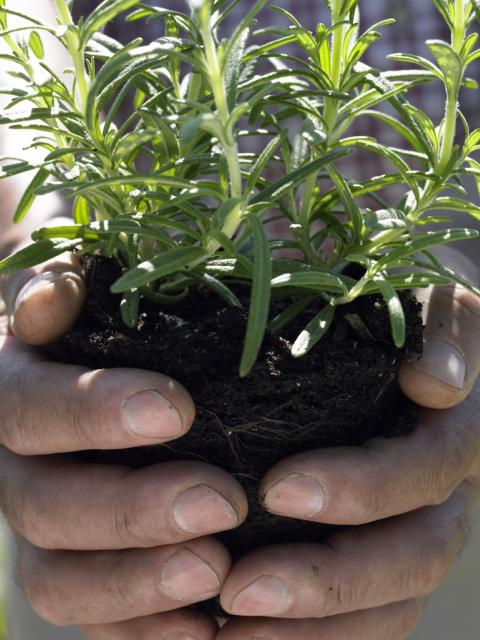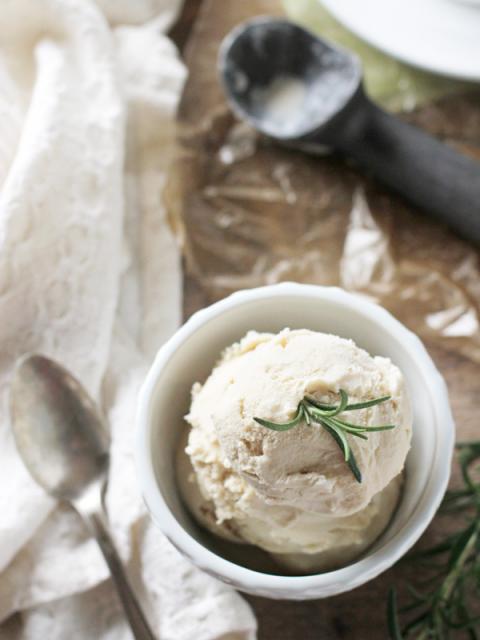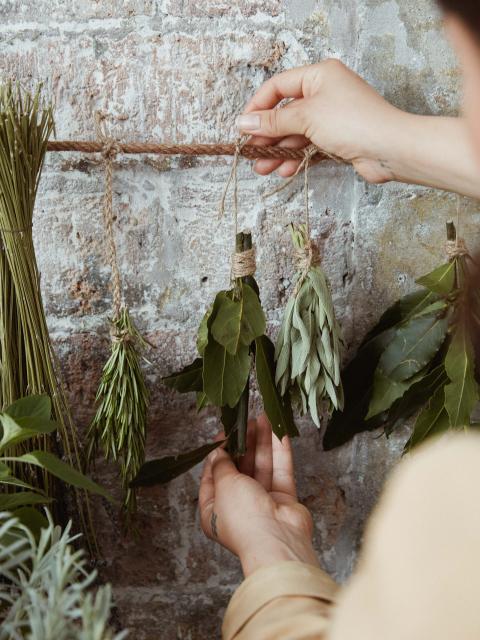Colours and shapes
Rosemary (officially called Rosmarinus officinalis) is a moderately hardy evergreen shrub with attractive green leaves that resemble needles. When dried they’re used as herbs. The plant produces blue flowers from March to May, although there are also species with pink flowers. The most common rosemary plant reaches a maximum height of 1 m, whilst there is also a creeping variety that grows to about 30 cm high and is ideal for borders, hanging baskets and walls. Placing herbs like rosemary amongst decorative plants is not just a trend, but also enhances the biodiversity of your garden. Position the plant alongside a path so to that every time you pass it and touch the leaves an attractive incense-like fragrance is released.
origin
Rosemary is a member of the deadnettle family and grows in southern Europe and Asia Minor. The plant particularly thrives along the coast, but can survive up to a height of 1500 m. The flowers contain a lot of nectar, so that the plant attracts butterflies, bumblebees and other insects. Rosemary has been popular with humans for a very long time - remains of the herb have even been found in the pyramids in Egypt. In Greece the herb was associated with the love cult around Aphrodite/Venus.
Trivia
-
Rosemary’s Latin name Rosmarinus literally means ‘sea dew’ because the plant particularly occurs on the coast.
-
If you want to use rosemary as a kitchen herb, cut off a 6 cm tip with sharp secateurs and pick off the leaves. The flavour is quite strong, and goes well with red meat.
-
Rosemary symbolises friendship and loyalty and not forgetting someone.
-
In aromatherapy the fragrance has a refreshing effect on memory and brain.

